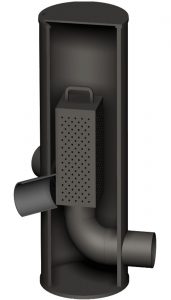Flow control chambers and attenuation flow control play a crucial role in managing fluid flow within various systems. One essential component in these systems is brass hose fittings, which offer durability, reliability, and versatility. This article aims to provide a comprehensive understanding of flow control chambers, attenuation flow control, and the significance of brass hose fittings in regulating fluid flow.
1. Flow Control Chambers
Flow control chambers are integral components in fluid systems that aid in managing and regulating the flow of liquids and gases. They act as intermediary units between the main pipeline and the end-use devices. Flow control chambers come in various designs and sizes, tailored to specific applications, but their primary function remains consistent: to control and stabilize the flow rate.
1.1 Purpose of Flow Control Chambers
Flow control chambers serve several essential purposes in fluid systems:
1.2 Flow Rate Regulation: Flow control chambers allow for precise adjustment of flow rates, ensuring that the right amount of fluid reaches the end-use device.
1.3 Pressure Control: These chambers help maintain the desired pressure levels within the system, preventing potential damage or inefficiencies.
1.4 Flow Direction Control: Flow control chambers enable the redirection of fluid flow to different outlets or devices as needed.
1.5 Flow Distribution: They ensure an even distribution of fluid across multiple outlets, preventing pressure imbalances and uneven flow rates.
2. Attenuation Flow Control
Attenuation flow control is a specialized technique used to manage fluid flow by reducing or damping the intensity of fluctuations and disturbances within a system. This process helps maintain a more stable flow rate and pressure.
2.1 Importance of Attenuation Flow Control
Attenuation flow control is crucial in various industries and applications:
2.2 Reducing Water Hammer: In hydraulic systems, attenuation flow control can minimize water hammer effects, preventing sudden pressure spikes that could damage pipes and components.
2.3 Noise Reduction: Attenuation flow control mitigates the noise generated by turbulent flows, ensuring quieter and more efficient operations.
2.4 Enhanced Efficiency: By smoothing out flow irregularities, attenuation flow control optimizes system efficiency, leading to energy savings and reduced operational costs.
3. Brass Hose Fittings
Brass hose fittings are widely used in fluid systems due to their outstanding properties. Brass is an alloy of copper and zinc, making it highly durable, corrosion-resistant, and suitable for various applications.
3.1 Advantages of Brass Hose Fittings
3.2 Corrosion Resistance: Brass hose fittings are resistant to corrosion caused by water and most chemicals, ensuring longevity and reliability in diverse environments.
3.3 Strength and Durability: Brass exhibits excellent mechanical properties, making hose fittings made of this material robust and long-lasting.
3.4 Versatility: Brass hose fittings can be used with various types of hoses, making them suitable for a wide range of applications across industries.
3.5 Temperature Tolerance: Brass can withstand a broad temperature range, making it suitable for both hot and cold fluid systems.
4. Applications of Brass Hose Fittings in Flow Control Chambers
Brass hose fittings find extensive use in flow control chambers for various applications:
4.1 Garden and Landscape Irrigation: Brass hose fittings are commonly used in garden irrigation systems due to their resistance to outdoor conditions.
4.2 HVAC Systems: Flow control chambers in heating, ventilation, and air conditioning (HVAC) systems often utilize brass hose fittings for their reliable performance.
4.3 Industrial Processes: Flow control chambers in industrial settings benefit from brass hose fittings' durability and resistance to harsh chemicals.
4.4 Residential Plumbing: In residential plumbing systems, brass hose fittings are favored for their longevity and compatibility with different pipes and hoses.
5. Proper Maintenance and Installation
To ensure optimal performance and longevity, proper maintenance and installation practices are essential for flow control chambers, attenuation flow control, and brass hose fittings.
5.1 Regular Inspection: Periodic inspections are crucial to identify any potential issues, such as leaks or signs of wear, and address them promptly.
5.2 Lubrication: Applying a suitable lubricant to brass hose fittings can facilitate smoother operation and prevent corrosion.
5.3 Correct Installation: Ensuring proper installation of flow control chambers and brass hose fittings is critical to preventing leaks and maintaining efficiency.
Flow control chambers and attenuation flow control are indispensable in fluid systems, and their performance greatly relies on well-designed brass hose fittings. Understanding the significance of these components and their applications can lead to more efficient fluid management and longer-lasting systems. By adhering to proper maintenance and installation practices, one can maximize the benefits of flow control chambers, attenuation flow control, and brass hose fittings across various industries.

.jpg)



No comments:
Post a Comment